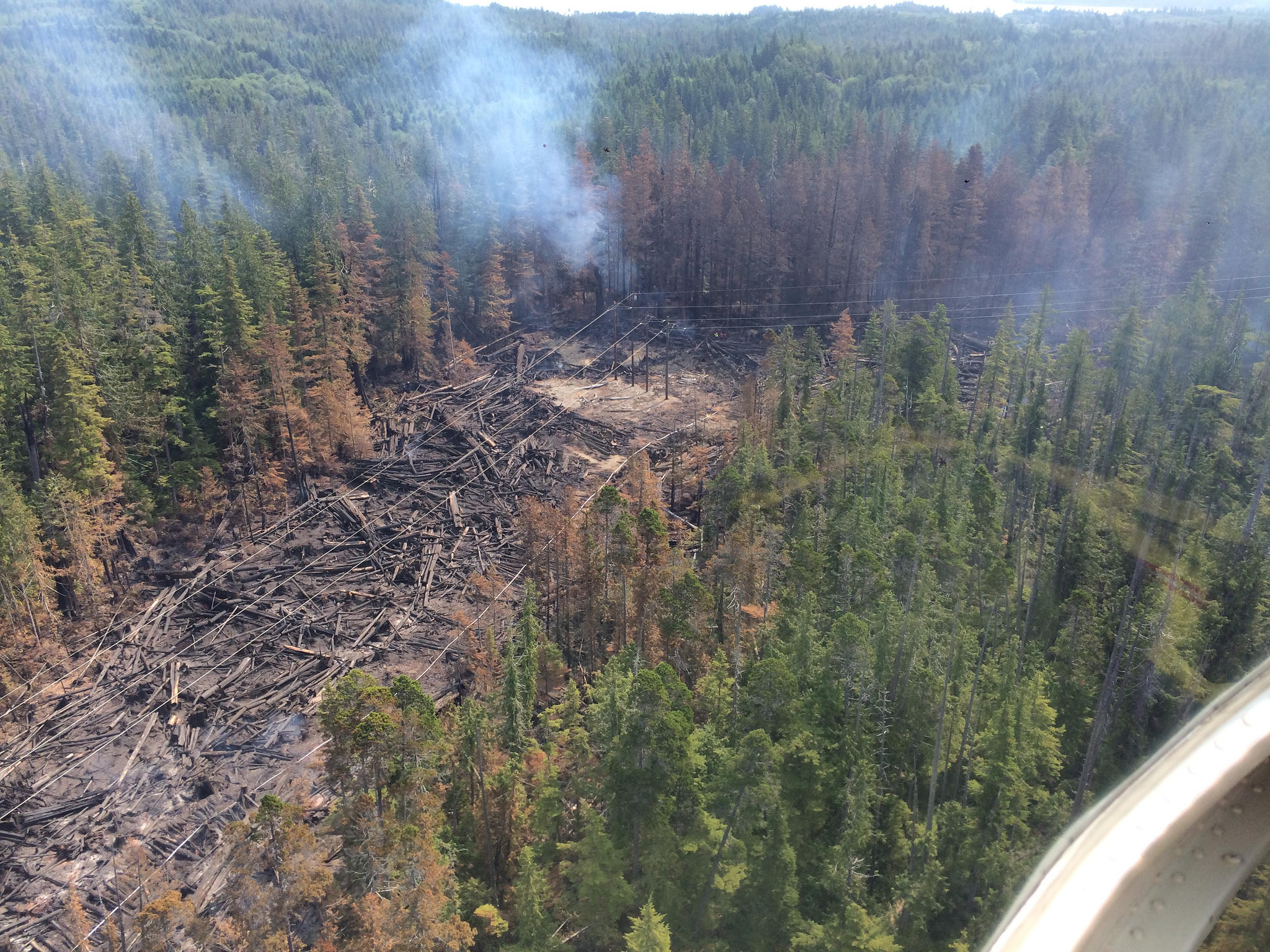
Members of a tiny First Nation in northwest British Columbia remain scattered across the province in hotels and relatives’ homes after fleeing destructive wildfires this summer.
It will take months to clean up the damage in Tahltan First Nation territory in Telegraph Creek, which was devastated by four wildfires that merged into one 1,180-square-kilometre blaze in August, said Chief Rick McLean.
Crews must clear debris and burned-out houses, ensure the water is drinkable, restore police and health services and even restock store shelves, he said. Rebuilding 21 destroyed homes can’t even begin until spring, when the ground isn’t frozen.
“It’s mixed emotions,” McLean said. “Some people are happy they got out and have their safety and lives. Other people are taking it a little bit harder after losing all their stuff, everything.”
The 2018 wildfire season was the worst in B.C. in terms of land burned, scorching more than 13,000 square kilometres. The flames hit First Nations especially hard and sparked complaints of poor funding and communication with Indigenous groups.
The federal government is responsible for funding emergency planning for First Nations on reserve lands, while the province funds regional districts. Indigenous groups say the result is a complicated, bureaucratic system that left them ill-prepared.
McLean said the Tahltan did not have adequate resources to battle wildfires. Its fire department runs on $10,000 a year, he said, which is not nearly enough given that maintaining and fuelling a fire truck costs several thousand dollars on its own.
But he said he spoke in mid-August with Premier John Horgan, who raised his concerns with Prime Minister Justin Trudeau. Since then McLean has had further talks with the province and Indigenous Services Canada and believes they’ll help the nation rebuild.
“Between (government funds) and our insurance, if you put all the pieces together, we hope to come up with enough to rebuild those homes that were lost and rebuild the community,” he said.
Mobile homes will eventually be set up in the community for people whose houses were destroyed, said Kristina Michaud, who lives in Prince George but whose family is from Telegraph Creek.
“It’s been difficult,” she said. “There are still lots of people who are in need and who are still displaced from the fires.”
A benefit concert was recently held in Whitehorse and the First Nation is also accepting donations of money and furniture, said Michaud.
“The whole nation has taken a hit. Even the homes that are still standing suffered a great amount of either water damage or smoke damage,” she said.
“Our wildlife has been significantly hit hard. Even our rivers, we may not even be able to go home and fish for a few summers.”
Forests Ministry spokeswoman Vivian Thomas confirmed Horgan spoke with McLean in August and raised the chief’s concerns about training and resources with Trudeau.
The prime minister met with Horgan during a cabinet retreat in Nanaimo, said Rachel Rappaport, an Indigenous Services Canada spokeswoman.
During the cabinet retreat, Trudeau flew on Aug. 23 to Prince George, where he pledged to “clear up those lines of flowing resources” to Indigenous communities.
Ottawa and B.C. have a 10-year, $29.6 million agreement to deliver emergency services to on-reserve First Nations, enabling them to receive comparable support to local governments, said Indigenous Services Canada spokeswoman Martine Stevens.
But she said significant efforts have been made this year to improve support for B.C. First Nations affected by wildfires, including streamlining a process to apply for funding for emergency preparedness and response projects.
“Our department is working with the Tahltan First Nation community to assess impacts. We are working closely with the First Nation and partners to assist on immediate re-entry needs as well as recovery planning,” she added in a statement.
B.C. has also established a new $50-million, three-year program that allows communities to apply for funding to cover up to 100 per cent of their wildfire risk reduction projects.
McLean said he planned to apply for the funding and he urged other communities to do the same.
“Clean up your debris, cut your guards, clean up all your old stumps, trees, and dry wood and grass,” he said. “Get your community members trained for fighting fires.
“With the climate changing like this … fire is going to be the norm.”